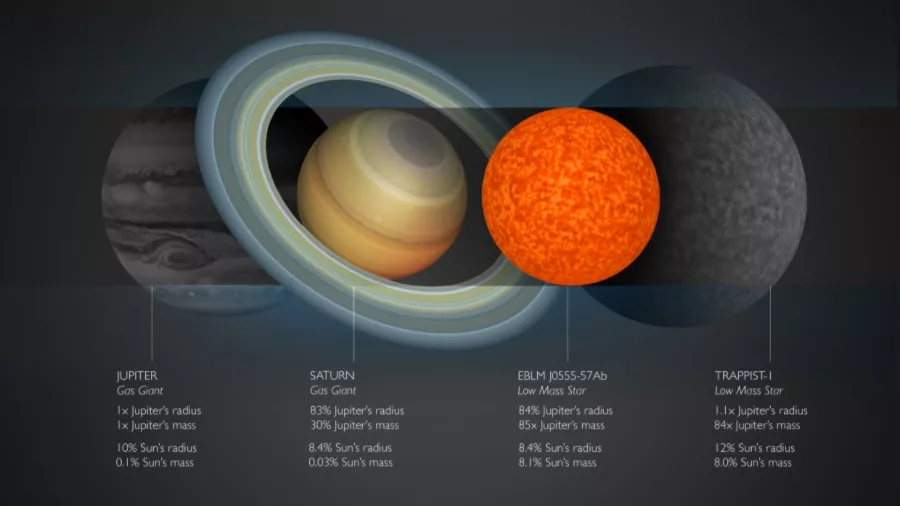Astronomers Just Discovered The Smallest Star Ever Known

Short Bytes: Astronomers have discovered the smallest star ever known. It is named EBLM J055-57Ab. The star is almost the size of Saturn, located at a distance of 600 light years away from Earth. It is relatively small as compared to the size of stars. Also, it is 2000-3000 times fainter than the Sun and was initially not the part of planned survey of the Astronomers.
Scientists have newly discovered the smallest star in the Universe. The biggest star, if you know, is named VY Canis Majoris in the constellation Canis Major. It is the most luminous and hypergiant star with the solar radii of 2600.Now, it is the smallest star discovered by Astronomers. The reports, as published in Astronomy and Astrophysics on Wednesday, mentioned the size of the star to be slightly bigger than Saturn. They also said that it is located at a distance of 600 light years.
This smallest star is named EBLM J0555-57Ab. It is part of the binary system; it orbits another much larger star. Astronomers also believe that via telescope we can get the glimpse of the star from the Southern hemisphere.
Astronomers came across this discovery by chance while they were surveying exoplanets. The Astronomers group is the one who discovered the Trappist-1 system.
Using the Wide Angle Search for Planets (WASP), the team of Astronomers searches for exoplanets in our system. The planet identifies star’s brightness that hints the presence of any celestial body crossing across the telescope. But sometimes, the telescope finds stars in a binary system.
The astronomers initially considered it to be an exoplanet, but estimating its mass, they realized it had to be a star. Also, the star was very dim, about 2000 to 3000 times fainter than the Sun. So they calculated it to be a small, dim star.
It is the smallest a star can be. A little smaller might not have possessed the capability to enable Hydrogen fusion process. The star had just enough mass to process the fusion only stars like Sun can exhibit. And if the mass was a little less, then the star probably would have turned into Brown Dwarf.
“This star is smaller and likely colder than many of the gas giant exoplanets that have so far been identified,” said Alexander Von Boetticher, lead author of the study.
The study also revealed that the gravitational pull of the star is 300 times to that of the Earth.
Got anything to add to the topic? Please share your thoughts.
Also Read: Birthdays of Stars: Scientists Reveal Ages of Stars by Its Spin






